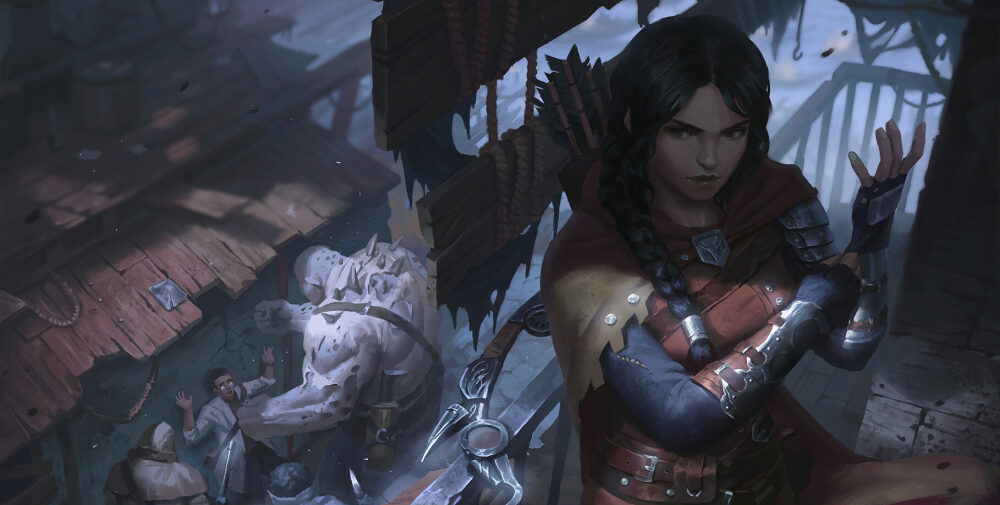
Road to Nationals Draft Guide
April 12, 2023
Road to Nationals Draft Guide - Judges & Tournament Organizers
Competitive events require extra care from the Tournament Organizer (TO) and judges to uphold tournament integrity. The biggest difference from a Pre-release, Armory, or casual level event is that competitive events offer more prizing and prestige for players, and it is the responsibility of the TO and judges to ensure these events meet the standards of quality that LSS strives for.
This article was written to provide you with a guideline to help you handle the logistical challenges that come with running a Competitive event for the first time. For example, competitive limited events need to be run with card pool registration and verification, which is an additional task for you as a TO and for your Judge team.
Following this guide will help you facilitate the needed processes. This process has been designed to cover the most common challenge so that they can be addressed before they become problematic.
GEM setup
For guidance on how to run the draft event in GEM, you can refer to this fabtcg.com article which was written for last year’s Road to National season. GEM will designate the pod size for your events, the standard size for a draft pod will be 8 players but due to the overall event size, some pods may vary.
Due to how damaging it is to have missing players for a draft, it is strongly recommended that you verify player attendance for your event prior to Round 1 is generated. Ensure all present players are in your event and any missing players are dropped, then pair Round 1. GEM will generate the draft pods to make the round 1 pairings work.

Pre-draft setup
Having all resources ready when the event starts will enable a smooth and timely start for the players.(https://fabtcg.com/documents/246/out_card_pool_registration_sheet.pdf) Each player will need a blank pool registration sheet for each draft during the event. Players are also expected to fill out the registration sheet in pen so having additional pens available is best to avoid problems. You can set these items up by having a single pile per pod with all the pool registration sheets and pens in the middle of the table.
Clear the table of any other objects that block vision or could be in the way of packs moving between players (e.g. drinking bottles, deck boxes, bags, phones, etc.). This will ensure that nothing is in the way to cause issues, be knocked over, or cause distractions during the draft. The table should be free of any objects not needed during the draft (playmats are perfectly fine to be used).
Only distribute the packs to the players when all players are seated and instruct them to wait to open their packs until everybody has their product. We recommend that Road to Nationals events use uncalled drafts, as without significant judge staff you can experience delays when pods fall out of sync during the draft. If you do choose to have your draft be called, the judge may find it useful to use this online tool on JudgeHub.
Printed pool registration sheets and pens are supplies you will need to have ready when the event starts. For the pool registration sheets, please use the Outsiders card pool registration sheet. Additionally, an extra supply of relevant tokens will be useful for players to ensure they have all the pieces they need for the event.
Important player announcements for drafting
The following should be incorporated into the head judge announcement, besides the standard information, before starting the draft:
- Cold foil cards opened during the draft must be removed from the pack, these cards are for the player to keep, but cannot be used in the draft.
- Players need to draft in a single face-down pile and not marked in any way, for example not partially turned.
- Players are not allowed to look at their picked cards, unless during the review period between packs.
- No deck boxes or sleeves on the table during the drafting
- No talking during the draft, during verification, and during the build period.
- No looking at other players’ cards during drafting or building.
- Explain to them how the verification process works (more in the next section).
In addition, if you are running an uncalled draft make sure to explain to the players how to zone draft:
- Players may only have one draft pack in their hand, one to their left and one to their right on the table.
- No lining up packs to avoid confusion.
- If all 3 zones are full (one to the left, one to the right, and in their hand), they need to wait to continue drafting until they can pass a pack on (refer to the image below).

Verification process with multiple draft pods
After players are done drafting, they will leave their cards in a single face-down pile in front of them. At this point, they will each take one card pool registration list and write their name on the appropriate slot (PLAYER USING POOL) on the front side of the deck list and afterwards wrap their draft pool into the deck list and wait at this point.
At this step, the main focus is to verify the drafted pool while giving players privacy, so that other players in their pod do not see their cards. The judge will pair each player with someone from a different draft pod and relocate them in the room to sit together and repeat this process until everybody is seated with somebody that they did not draft with. A simple way to do this is to move all players who are in the same seat number to a location (ie all players in seat one of their pod over here, seat two over there, etc).
Depending on space, we recommend putting effort into not having players from drafts next to each other, but this will be only possible to a certain degree. The important thing is that the person they are paired up with is not from the same pod. As a reminder, this is a silent process for all the players.
Once the players are re-seated, players will verify each other’s pool. They need to write their name as “PLAYER REGISTERING POOL”. Players should sort each other’s pool and register it according to the sheet. When they are done they will give the pool back to the owner and the owner needs to verify the registration. This is the last moment where players can point out potential issues, afterwards no missing cards will count as being part of the pool. This process is timed with a 15-minute time limit. Afterwards, players have 15 minutes to build their deck.
The only thing the player who drafted the pool needs to add to the pool registration sheet is the hero they are playing. Once they have locked that in they may hand in the registration sheet even if time has not expired (if all players have completed this process early, you may choose to advance the tournament to round 1 once all players are ready). When time expires, all remaining decklists must be collected. Players may not start chatting with others until they’ve handed in their pool registration sheet, and they aren’t in a location that will potentially give information to players still registering.
Verification process with a single draft pod
If there is only one single pod drafting, for small events or a top 8 segment, players should be separated from each other after drafting and isolated from any spectators. They will then register their pool and deck alone. This process requires the judge to have an overview of all 8 players. A judge may also request that players lay out their cards, so all card names are visible, and take a photo of the drafted cards as a secondary verification.
After verification is done, the event will proceed the same as a constructed event until the next draft is started, depending on the number of players attending plus the top 8 draft.
Additional Information
As a reminder at the end, Judges are recommended to perform deck checks during the event.
- For additional guidance for judges, we are providing different seminars in the week before the Road to Nationals season. Attendance is fully optional, but will help Judges to understand better and be able to ask questions to experienced mentors. You can find more information here. https://judge.fabtcg.com/events/12926/
- In cases of cheating and other infractions happening, refer to the Procedure and Penalty Guidelines. For an intro to drafting you can have a glance at this article on fabtcg.com.
- Link for registration sheets for Outsiders: https://dhhim4ltzu1pj.cloudfront.net/media/documents/out_card_pool_registration_sheet.pdf

